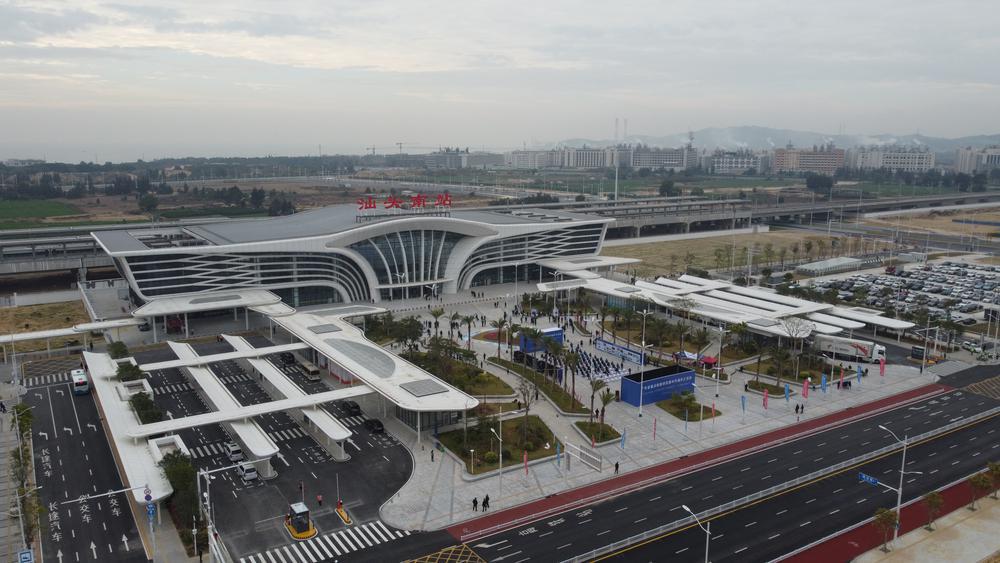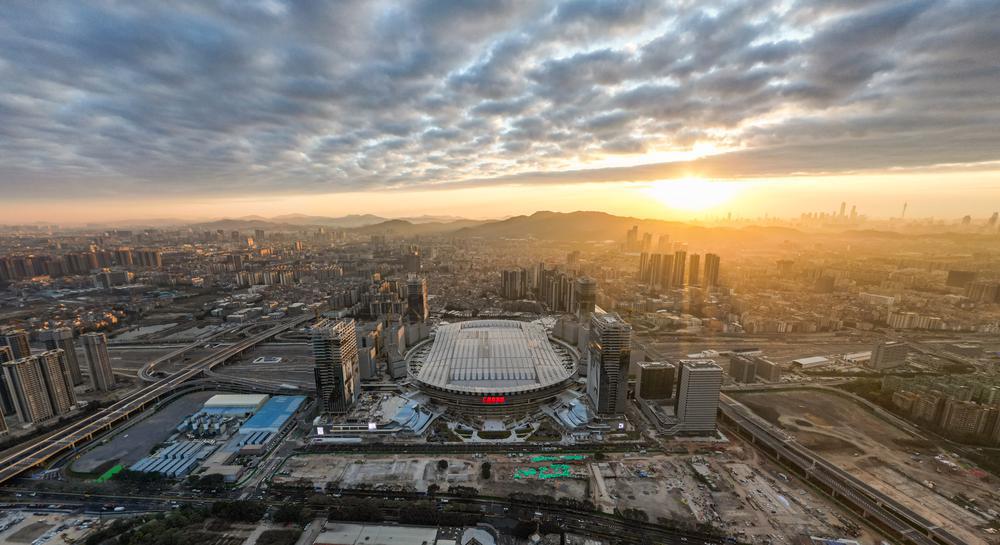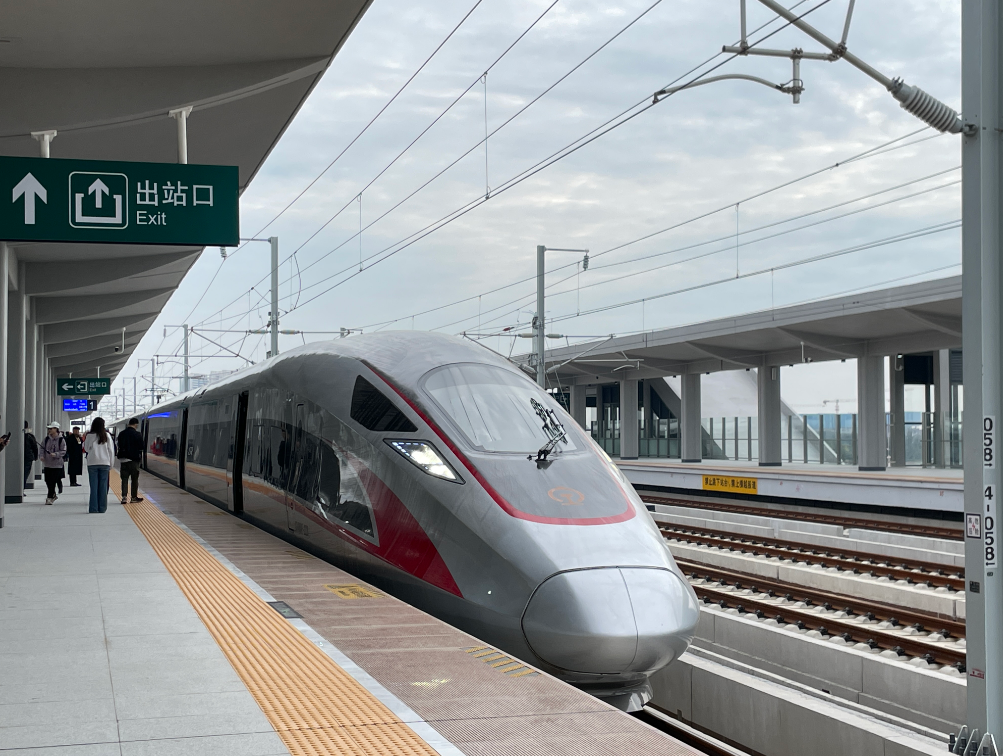
High-speed railway is one of the most efficient modes of transportation on land, and China boasts the world's longest high-speed railway network. As the year comes to a close, China experiences a peak period of concentrated railway operations.
On December 26th, the Shantou-Shanwei high-speed railway in Guangdong Province, the Longyan-Longchuan high-speed railway linking Guangdong and Fujian provinces, and the Chengdu-Yibin high-speed railway in Sichuan Province were officially opened. There are also previously inaugurated high-speed railway lines such as Guiyang-Nanning high-speed railway, Fuzhou-Xiamen high-speed railway, and Jinan-Zhengzhou high-speed railway. In total, China has added over 2,200 kilometers of new high-speed railway mileage this year. As of the end of 2023, China's operational railway mileage exceeds 156,000 kilometers, with the total high-speed railway mileage surpassing 44,200 kilometers.

China's high-speed rail network is planned with a huge framework known as the "eight vertical and eight horizontal" railway network. It consists of eight north-south and eight east-west high-speed railway lines connecting all major cities across the country. Imagine China as a vast Go board: these high-speed railway lines serve as the gridlines, and the major intersecting cities are the board's pieces. The blueprint of the "eight vertical and eight horizontal" railway network was proposed in 2016, with plans to complete it by 2030. So far, China has already accomplished 80% of this magnificent plan.


"Eight vertical" high-speed railway corridors:
Coastal corridors linking the northernmost city of Dandong to the southernmost city of Fangchenggang along China's coastline
Beijing-Shanghai corridor connecting the capital city of Beijing to the largest city, Shanghai, in China
Beijing-Hong Kong (Taipei) corridor linking Beijing to Hong Kong and Taiwan
Beijing-Harbin, Beijing-Hong Kong (Macao) corridorconnecting the northernmost capital city of Harbin to Hong Kong and Macao
Huhhot-Nanning corridor linking the capital cities of Inner Mongolia and Guangxi, respectively
Beijing-Kunming corridor connecting Beijing to Kunming in the southwestern region of Yunnan
Baotou (Yinchuan)-Hainan corridor linking Baotou in Inner Mongolia to Haikou in Hainan Province.
Lanzhou (Xining)-Guangzhou corridor connecting Lanzhou in Gansu Province to Guangzhou in Guangdong Province
"Eight horizontal" high-speed railway corridors:
Suifenhe-Manzhouli corridor, located in northeastern China, connecting Suifenhe and Manzhouli
Beijing-Lanzhou corridor, linking Beijing to the western city of Lanzhou
Qingdao-Yinchuan corridor connecting Qingdao in Shandong Province to Yinchuan in Ningxia Province
Lianyungang-Urumqi corridor linking Lianyungang in Jiangsu Province to Urumqi in Xinjiang Province
Shanghai-Chongqing-Chengdu corridorconnecting Shanghai to Chengdu in Sichuan Province
Shanghai-Kunmingcorridor connecting Shanghai to Kunming in Yunnan Province
Xiamen-Chongqing corridor linking Xiamen in Fujian Province to Chongqing
Guangzhou-Kunming corridor connecting Guangzhou in Guangdong Province to Kunming in Yunnan Province
Source:Yangcheng Evening News
回顾2023:中国八纵八横高铁网建成80%
高铁是陆地上最高效的运输方式之一,中国有全世界历程最长的的高速铁路网络。
每到年底,中国就迎来铁路集中通车运营的高峰期。12月26日,广东的汕汕(汕头至汕尾)高铁汕头南至汕尾站段,连接广东和福建的龙龙高铁(龙岩至龙川)龙岩至武平段,四川省境内的成都至宜宾高铁同日通车。加上之前通车的贵南(贵州至南宁)、福厦(福州至厦门),济郑(济南至郑州)等高铁线路,今年,中国新增高铁里程超过2200公里!
截至2023年年底,中国铁路运营里程超过15.6万公里,其中高铁总里程超过4.42万公里。
中国的高铁网规划中,有一个“八纵八横”的骨架网络。“八纵八横”就是从北到南、从东到西分别有8条东西走向和8条南北走向的高铁串联起这个国家的所有重要城市。把中国想象成一个巨大的围棋棋盘,八纵八横高铁网就是棋盘上的线,高铁相交的大城市就是棋盘上的棋子。
“八纵”通道:
沿海通道,连接中国海岸线最北端的丹东和最南端的防城港
京沪通道,连接中国首都北京和最大城市上海
京港(台)通道,连接北京和香港以及台湾
京哈-京港澳通道,连接中国最北端的省会城市哈尔滨和香港澳门
呼南通道,连接内蒙古和广西两个自治区的首府呼和浩特和南宁
京昆通道,连接北京和西南部的云南昆明
包(银)海通道,连接内蒙古包头和海南省的海口
兰(西)广通道,连接甘肃兰州和广东广州
“八横”通道:
绥满通道,位于中国东北,连接绥芬河和满洲里
京兰通道,连接北京和西部城市兰州
青银通道,连接山东省青岛和宁夏银川
陆桥通道,连接江苏连云港和新疆乌鲁木齐
沿江通道,连接上海和四川成都
沪昆通道,连接上海和云南昆明
厦渝通道,连接福建厦门和重庆
广昆通道,连接广东广州和云南昆明
“八纵八横”高速铁路网的宏大蓝图在2016年被提出,计划于2030年建成。截至2023年年底,中国已经完成了这个伟大计划的80%。
文|赵鹏
图|记者 陈锴跃 曾柯权 赵映光 钟振彬 通讯员 汕宣
翻译|陈萱
-
2023 Review: China's 'eight vertical and eight horizontal' railway network reaches 80% completion
2023-12-29 21:10:49 -
Y Talk㊸| What did we do in 2023? 回望2023,我们做了什么?
2023-12-29 15:07:46 -
Video|Italian doctor Enrico Randi: A journey of Tai Chi from Guangdong to Bologna
2023-12-29 15:04:06 -
Baiyun Airport handles 2 mn tons of cargo in 2023
2023-12-28 22:13:33






